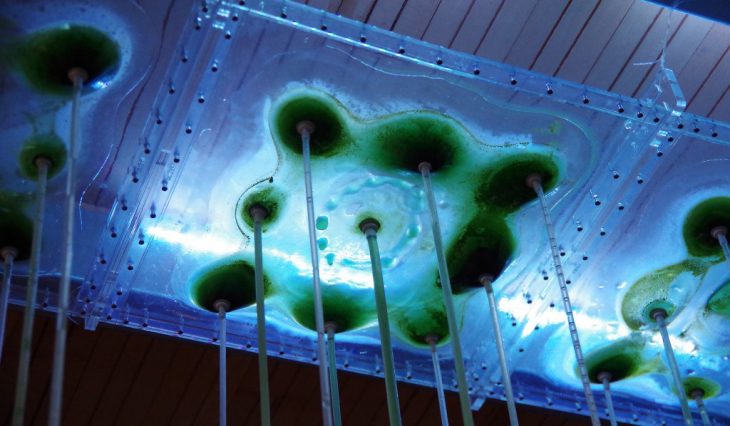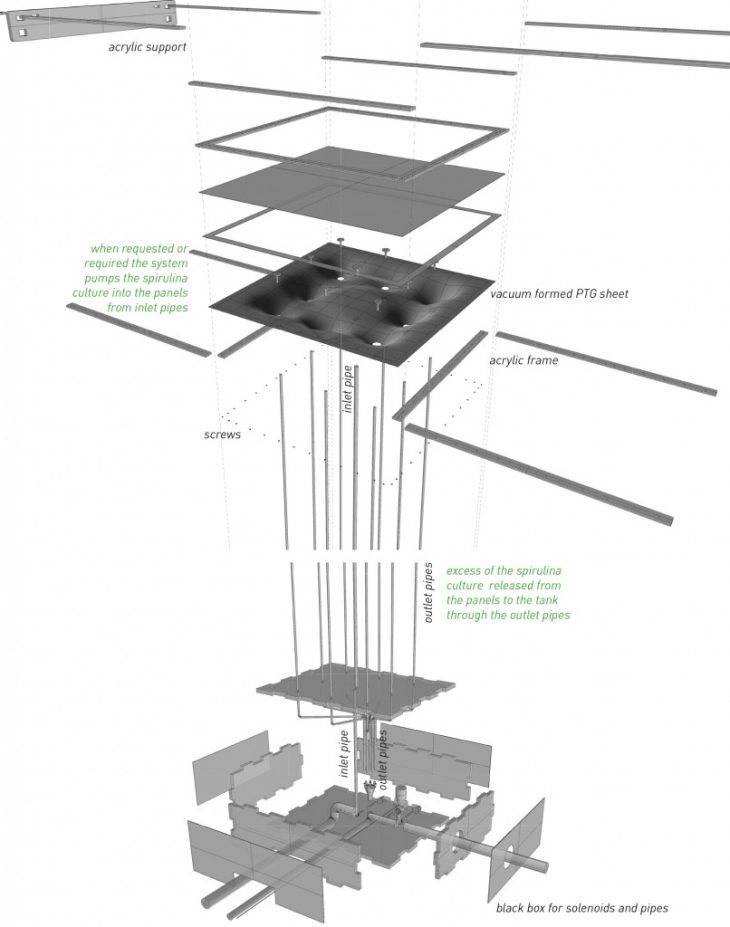WHERE DOES OUR FOOD GROW?
//ABSTRACT
The future of mankind humanity appears bleak, if not apocalyptic.
Humanity’s impact on the environment has become undeniable and will continue to manifest itself in ways already familiar to us, except on a
grander scale. In a warmer world, heavier floods, more intense droughts, and unpredictable, violent, and increasingly frequent storms could
become a new normal.
Every person on Earth requires resources to survive. As population grows, more and more resources will be demanded, the most essential
of which are food and water. If supply does not meet demand, we have a situation called food insecurity. The world needs to produce at least 50% more food to feed 10 billion people by 2050. But climate change could cut crop yields by more than 25%. Unless we change how we grow
our food and manage our natural capital, food security will be at risk. (World Bank, 2016).
Our aim is to explore alternative food to feed the exploding world population in the future – in a sustainable, cost-effective, and environmentally friendly way. Urban agriculture may be inefficient today, but it’s a model for a sustainable future. Of course, we can’t expect an Urban farm to have the same production capacity as a conventional, massive monoculture farm, but that doesn’t mean the urban farms have no true value; the amount of calories it yields shouldn’t be the sole metric of its worth.
The research explores the alternative approach towards urban farming by focusing on cultivating, harvesting and consuming ‘Spirulina’ in the urban context so as to bridge the gap between the urban and the natural as well as introducing ways in which the superfood becomes part of our daily diet.
PIXELGAE : URBAN WILDERNESS
//VISION
The vision for developing this project is to get people to discourse about the benefits of the ‘farm to plate’ theory and its advantages in the current world scenario. This project is developed with the intention of bringing people close to nature again. The vision for the Architectural prototype was not only to develop a prototype which can give good yield but also for people to get close to the production cycle. The design evokes the connection with nature and the feel of crossing a Jungle which has been lost for most of the Urban population. If an individual feels connected to nature (possibly by spending time in it), they may be more inclined to care about nature, and protect the environment. (Schultz, 2002).
Recent research has found that nature exposure (and feeling connected to nature at a trait level) provides many benefits to humans such as well-being (Mayer, Frantz, Bruehlman-Senecal, & Dolliver, 2008). As Stephen Jay Gould said:
“We cannot win this battle to save species and environments without forging an emotional bond between ourselves and nature as well – for we will not fight to save what we do not love.” (Orr, 2004)
//PROJECT
The Architectural prototype is a closed equipment which provides a controlled environment and enables high productivity of algae. As it is a closed system, all growth requirements of algae are introduced into the system and controlled according to the requirements. This facilitate better control of culture environment such as carbon dioxide supply, water supply, optimal temperature, efficient exposure to light, culture density, pH levels, gas supply rate, mixing regime, etc. The biomass production can be done at a high quality level and the high biomass concentration at the end of the production allows energy efficient downstream processing.

flat panels
The PBR is designed as a combination of flat panels and tubular system. The algae are circulated from a closed container which is kept on the ground by the use of a submersible water-pump. The algae flow up to the flat panel at the top which then trickles down from the panel at the top back to the main tank. All the minerals are added in the main tank and a check on the culture environment is kept here. When the biomass density has reached the optimum volume, it is extracted from the main tank for consumption.
The flat panels increase the illuminated surface areas and the tubular system increases the surface area for the algae to flow through. The tubes also help in aeration of the algae my mixing the trapped air in the tubes when the algae flows through it.
//MORPHOLOGY
The panels in the design are the canopy which have been designed so as to minimize the energy in the day to day running of the PBR. The inlet is at the highest point which then transforms into multiple lower bulges which are connected to the tubular system which takes the algae back to the feeding vessel. Multiple forms were tried at different scales to understand the constant circulation of the algae through the photo-bioreactor. The tubular system of the PBR should evoke the feeling of walking through the ‘vines’ of a Banyan tree which drop down from the canopy of the tree down to the ground. Utmost importance was given to the diameter of the tubes to get the desired effect when the algae is flowing through it.

process
//INTERACTION

user interface
We have devised a system in which our feeding vessel can hold around 25 liters of algae and the panels can hold around 14.4 liters of water. We have a total of 9 panels. The flow of Algae in each panel is controlled by a sketch from which the users can control which panel needs to get filled. The sketch is connected to an Arduino which controls a solenoid for each panel separately which lets the algae flow up the tubular system. The Arduino is further connected to a light source which gets switched on above the flat panel as the algae is getting filled up.
research booklet
//CONCLUSION
Today, Spirulina is typically consumed as a supplement, not just for its content of vitamins, minerals, and other nutrients, but as a remedy for a laundry list of conditions including cardiovascular disease, allergies, diabetes, and inflammatory and immune problems. The Spirulina is available majorly in 2 forms, in a powder form and in tablet form. At present, Spirulina is grown commercially in California, India, China, Hawaii, Chile in the open-pond system, making it susceptible to contamination from the changing environmental conditions. It is then dried and processed into powders and supplements and transported to the rest of the world. Spirulina is still being marketed as a superfood and because of all the embodied energy in bringing the supplements to the world, the cost increases significantly.
In this project, the cultivation and harvesting of spirulina in a photo-bioreactor under different conditions was studied. Along with that, different technics for the consumption were developed.
Working on this project has given us a confidence that Spirulina can be and should be grown all around the world by everyone. Spirulina needs light, salt culture and CO2 which is either already abundant in the world or can be easily obtained. The algae grow exponentially if the right conditions are met and can be consumed every day without any additive process.
We have been working towards creating a food which is eaten by more than 80% of the world and which is the basic necessity for survival. If we combine this with nutrients, it is enough for get rid of the hunger and malnutrition from the world.
“PIXELGAE : Urban Wilderness” is a project of IAAC, Institute of Advanced Architecture of Catalonia, developed as part of the Introductory Studio G2 course at the Master in Advanced Architecture program in 2017/18 by Aman Jain, Anuj Mittal, Umit Ceren Bayazitoglu and Takeru Osoegawa.
Tutors : Claudio Pasquero, Carmelo Zappulia and Sebastian Amorelli